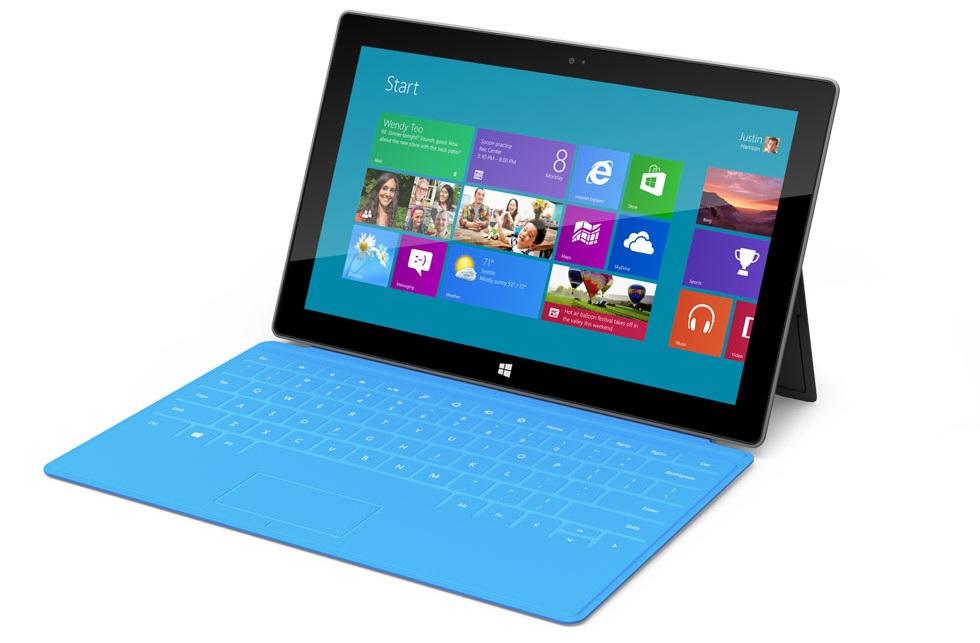I have been thinking about what I would say about Microsoft’s Big Announcement on June 18th that they will be releasing not one but two tablets into the marketplace sometime before the end of the year. I was on vacation when the announcement was made but I did fire up my ASUS Zenbook Prime Ultrabook to see what all the fuss was about.
Yes, I’m a PC guy. Have been since 1995 when I replaced all the cute Mac Performa 5200’s in my office with Gateway PCs and productivity (and sales) soared, even over the cries of protest from the creative group that Photoshop on a PC will suck (it did not). Now I’m not really one to get all emotional about computing devices, although I have been known to wait in line for the next cool gadget, and I was the first kid on my block to grab the original iPad way back in 2010 and immediately loved the design.
I was also the first kid on the block to get the first ASUS Transformer tablet and RIM’s Blackberry PlayBook. Luckily Staples was sold out of the HP TouchPad and by the time I went back, HP had already pulled it from the marketplace! There were two big drawbacks I found with the iPad – lack of a tactile keyboard (yes I still like using actual keys) and the draconian-style insistence of using iTunes for everything, which I dislike with a passion.
PC people in general hate iTunes and it makes the iPad feel like a big iPod (and essentially it IS a big iPhone without the phone). It’s not a device for business, in my humble opinion, much like most of Apple’s products – it’s a consumer home product that can run games and apps that try and emulate what we do on our work computers.
So a year and a half ago I sat in bed surfing the web on my iPad, trying to respond to emails, patiently waiting for the PlayBook to be released. Boy was I let down (along with millions of others and most RIM executives). What an EPIC fail. And I really tried to like it and use it. But it was not to be. I then turned to Android and bought the innovative ASUS Transformer tablet with removable hard case keyboard that included extra storage and battery life. Perfect. Well, not so much. The problem? It still runs apps like my phone, not applications like my Ultrabook PC.
So what does the “perfect Tablet” look like for me? It should be obvious by now that I like having the option of a tactile keyboard – but not all the time, like reading in bed, for example. Apps are fun, but I really want to be able to work with this device – who wants to create a PowerPoint presentation on an Android tablet? Not me. So it needs to run the same software as my workstation (which is how I now refer to the old ball and chain – my dual-monitor HP Pavilion desktop PC). It needs to be able to easily install applications from anywhere I choose, and I want easy connectivity too. USB ports, external monitors, high-def video, SD card storage and an optical device, these are all things promised by the new “Surface” tablet promised by Microsoft (at this point it’s all speculation until they actually let us try one).
But why would we not believe Microsoft? I bought my “perfect tablet” way back in 2006 – four years before the iPad was announced. It was a Gateway TA1 “convertible” Tablet PC running Windows XP Tablet Edition and it did everything I mentioned above except that the screen swiveled 180 degrees and snapped on to the front of the keyboard. Awesome! But it was heavy by today’s standards (now remedied by lighter components and circuit design) and it ran a modified version of Windows XP that wasn’t very finger-friendly. It was a tablet before its time. Shortly after the release by Gateway, other manufacturers jumped on the bandwagon but all were faced with the same two critical drawbacks – weight and user interface design. Four years and billions of dollars later, Steve Jobs released a better mousetrap. To most of the world, this was heralded as groundbreaking and visionary, but to the handful of us XP Tablet Edition users it seemed like Jobs and his team took our XP tablets and simply made them cooler and thinner, but not nearly as powerful as our laptops.
So, only two years after the original iPad is released (which seems like a lifetime ago but it was 24 months folks), Microsoft listens to its huge user base and with a slew of lighter components and faster processors, updates its Windows OS to natively include touch input devices and decides to build its own tablet so people can stop playing Angry Birds and get busy working on that big PowerPoint presentation the boss needs in the morning. Let’s all remember that Windows is still the dominant operating system present in almost 75 per cent of all devices and will be for some time. While I have been disappointed by various PC products over the years, the time has come to get back to work.
Rob Whent (rwhent@Think-2-Learn) is the President and CEO of OTEP Inc. and is the Entrepreneur in Residence at WEtech Alliance in Windsor, Ontario. OTEP (www.otep.com) is developing adaptive video game technology to identify and improve cognitive abilities in children with learning disabilities under the Think2Learn brand (www.think-2-learn.com). Follow him on Twitter @swento






